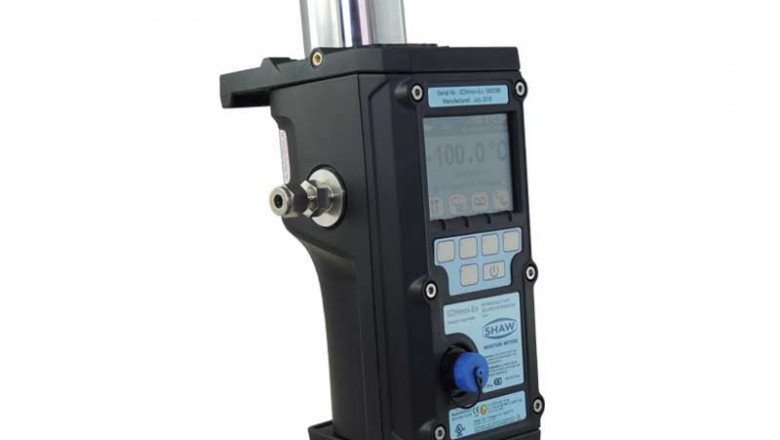views
A dewpoint meter is a specialized instrument used to measure the temperature at which moisture in the air condenses into liquid, known as the dew point. This measurement is critical in various industries such as manufacturing, HVAC systems, and meteorology, where controlling humidity levels is essential for efficiency and safety.
What is a Dewpoint Meter?
A dewpoint meter is a precision instrument designed to measure the dew point of a gas or air sample. It helps determine humidity levels and ensures that moisture-sensitive processes function correctly. The device provides real-time readings, making it invaluable for industries that require strict humidity control.
How Does a Dewpoint Meter Work?
Dewpoint meters operate based on various principles, including:
-
Chilled Mirror Technology: A highly accurate method where a mirror is cooled until condensation forms. The temperature at which this occurs is the dew point.
-
Capacitive Sensors: These sensors measure changes in capacitance caused by moisture absorption, providing dew point readings.
-
Resistive Sensors: Measure humidity levels by detecting variations in resistance as moisture content changes.
-
Piezoelectric Sensors: Use quartz crystals that react to moisture, giving precise dew point measurements.
Importance of Dewpoint Measurement
Measuring the dew point is essential in various applications, as excessive moisture can cause equipment failure, product defects, and safety hazards. The key benefits of dewpoint measurement include:
-
Preventing Corrosion: High humidity levels can lead to rust and corrosion in metal components.
-
Ensuring Product Quality: In industries like pharmaceuticals and food processing, maintaining proper humidity is crucial for product integrity.
-
Energy Efficiency: HVAC systems use dewpoint meters to optimize cooling and dehumidification, reducing energy costs.
-
Compressed Air Systems: Excess moisture in compressed air can damage machinery and reduce efficiency, making dewpoint monitoring essential.
Industries That Use Dewpoint Meters
Several industries rely on dewpoint meters for quality control and operational efficiency:
HVAC and Building Maintenance
Dewpoint meters help monitor humidity levels in buildings, ensuring optimal air quality and preventing mold growth.
Compressed Air and Gas Systems
Industries that use compressed air, such as manufacturing and automotive, require dry air to prevent damage to pneumatic tools and equipment.
Pharmaceutical Industry
Controlled humidity levels are crucial in pharmaceutical production to maintain drug efficacy and prevent contamination.
Food and Beverage Industry
Maintaining the right moisture content in food storage and processing prevents spoilage and ensures product consistency.
Oil and Gas Industry
Dewpoint measurement is vital in natural gas processing to prevent condensation and corrosion in pipelines.
Meteorology and Environmental Monitoring
Weather stations use dewpoint meters to measure humidity and predict weather conditions accurately.
Types of Dewpoint Meters
Handheld Dewpoint Meters
Portable and easy to use, these meters are ideal for field measurements and quick humidity checks.
Fixed Dewpoint Meters
Installed permanently in industrial settings, these meters provide continuous monitoring of moisture levels.
Inline Dewpoint Meters
Used in compressed air and gas systems, these meters measure dew point directly in pipelines to ensure proper air quality.
Digital Dewpoint Meters
Equipped with advanced digital displays and data logging capabilities, these meters offer precise and real-time monitoring.
How to Choose the Right Dewpoint Meter
Selecting the right dewpoint meter depends on various factors:
-
Measurement Range: Ensure the meter covers the required dewpoint range for your application.
-
Accuracy: Higher accuracy is essential for critical applications like pharmaceuticals and electronics manufacturing.
-
Response Time: Faster response times allow for real-time monitoring and quick adjustments.
-
Portability: Handheld meters are ideal for field use, while fixed meters are suitable for industrial environments.
-
Data Logging Capabilities: Some meters can store data for analysis and reporting.
-
Calibration and Maintenance: Choose a meter that is easy to calibrate and maintain for long-term reliability.
How to Use a Dewpoint Meter Effectively
To get accurate readings and ensure optimal performance, follow these best practices:
-
Proper Placement: Place the sensor in a representative location where humidity levels need to be measured.
-
Regular Calibration: Periodic calibration ensures accuracy and reliability.
-
Avoid Contamination: Keep sensors clean and free from dust or oil to prevent measurement errors.
-
Monitor Trends: Use data logging features to track humidity changes over time.
Maintenance and Calibration of Dewpoint Meters
Regular maintenance is crucial for the accuracy and longevity of dewpoint meters. Key maintenance practices include:
-
Cleaning the Sensor: Prevents buildup of contaminants that may affect readings.
-
Calibration Checks: Regular calibration ensures the meter remains accurate.
-
Battery and Power Supply Maintenance: Ensure the device is always powered to avoid disruptions.
Future Trends in Dewpoint Meter Technology
Advancements in sensor technology and digital integration are shaping the future of dewpoint meters. Some emerging trends include:
-
Wireless Monitoring: Integration with IoT devices for remote monitoring and alerts.
-
AI-Based Predictive Maintenance: AI algorithms analyze trends and predict humidity-related issues before they occur.
-
Miniaturization: Compact and more portable designs for easier field use.
-
Eco-Friendly Solutions: Energy-efficient and sustainable designs for industrial applications.
Conclusion
Dewpoint meters play a crucial role in various industries, ensuring optimal humidity control, preventing equipment damage, and improving product quality. By understanding how these meters work, selecting the right model, and following best practices for maintenance, businesses can achieve greater efficiency and reliability in their operations. As technology advances, dewpoint meters will continue to evolve, offering even more precise and user-friendly solutions for humidity monitoring.






















Comments
0 comment